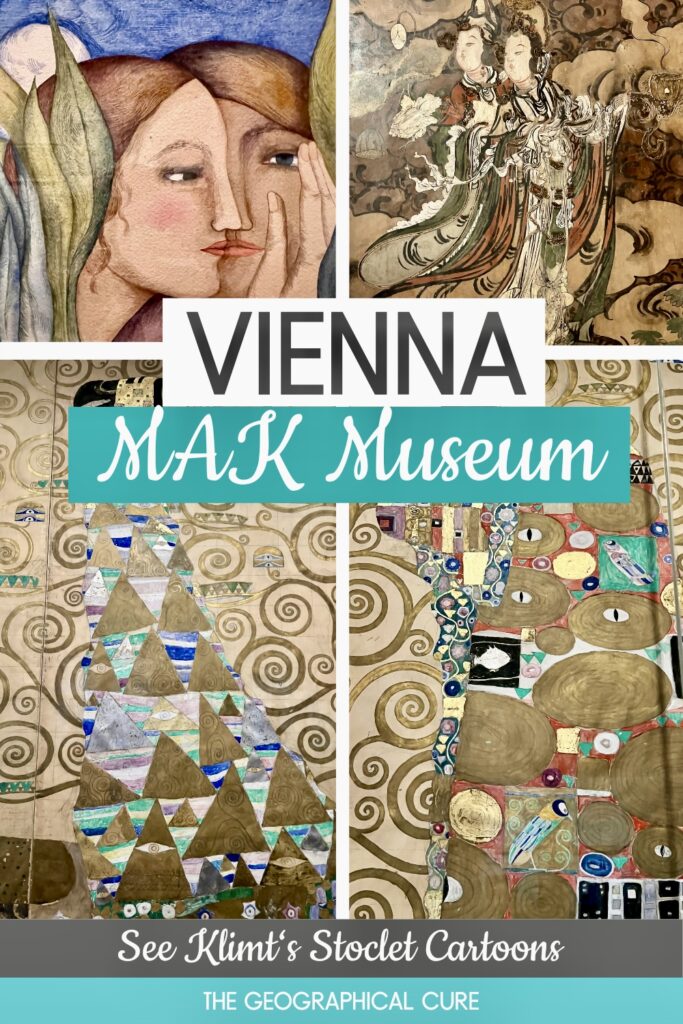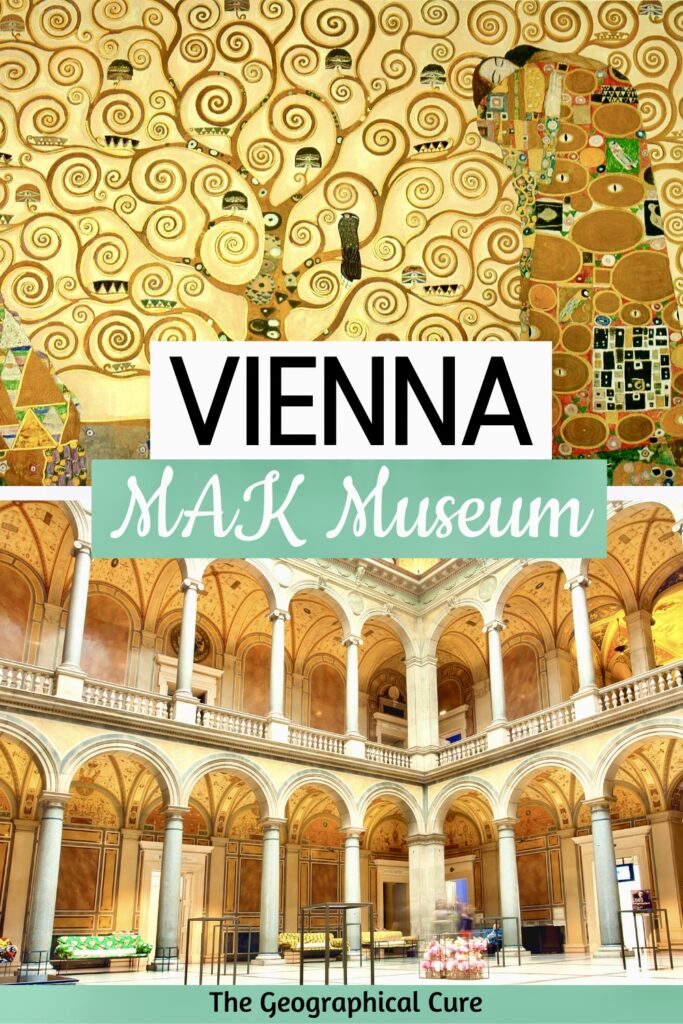The Museum of Applied Arts (“MAK”) is Vienna’s premier museum for design and decorative arts and crafts.
It boasts an exceptional collection of Art Nouveau pieces from fin-de-siècle Vienna. If you have an appreciation for Jugendstil and early Expressionist decorative arts and design, a visit here is a must.
I personally don’t always like design museums. I was unimpressed with the Design Museum In London for example.
But the MAK is at another level, more like the Victoria & Albert Museum in London (albeit somewhat smaller). It’s also not just a design museum. It combines history, fine art, and contemporary conceptual art as well — all in the loveliest setting.
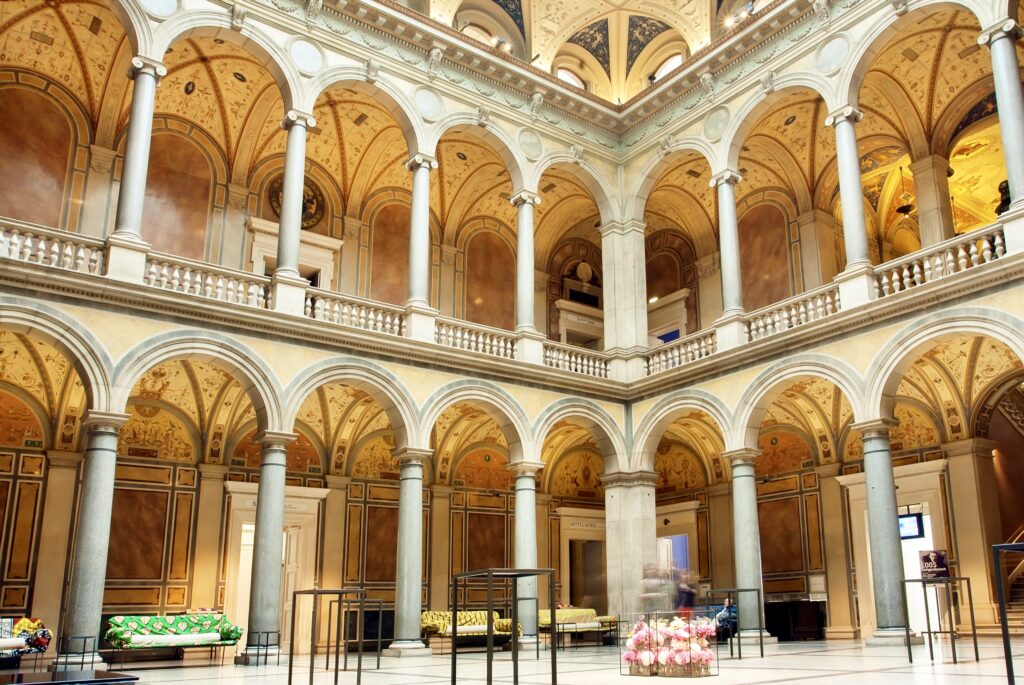
In this MAK guide, I take you on a tour of its diverse collections, highlighting the must-see exhibits. The star of the show is Gustav Klimt’s gorgeous golden cartoons for the Stoclet Palace.
The museum is spread out over 3 levels and showcases 500 years of arts and crafts and contemporary art. There are three main sections of the museum: (1) the permanent exhibits; (2) the MAK Design Lab; and (3) special exhibitions.
The spacious exhibition rooms were curated and designed by contemporary artists. They present selected (and ever changing) highlights of the collections from the middle Ages to the present.
When I last visited, there were 4 temporary themed exhibitions. I actually found it hard to tell where the permanent collection leaft off and the temporary ones began.
>>> Click here to book a skip the line ticket
Guide To The MAK Museum: What To See
Here’s what you can’t miss at the MAK.
The Building
The MAK museum is in a stunning red brick building. It was designed by architect Heinrich von Ferstel in the late 19th century. The building showcases Renaissance Revival style.
The architecture alone is worth a visit. It’s impressive inside and out.
When you enter, you’ll see a magnificent two story Neo-Renaissance courtyard. The ceilings in the vaulted arcades are adorned with grotesque frescoes and the spandrels above are in bright blue and gold.
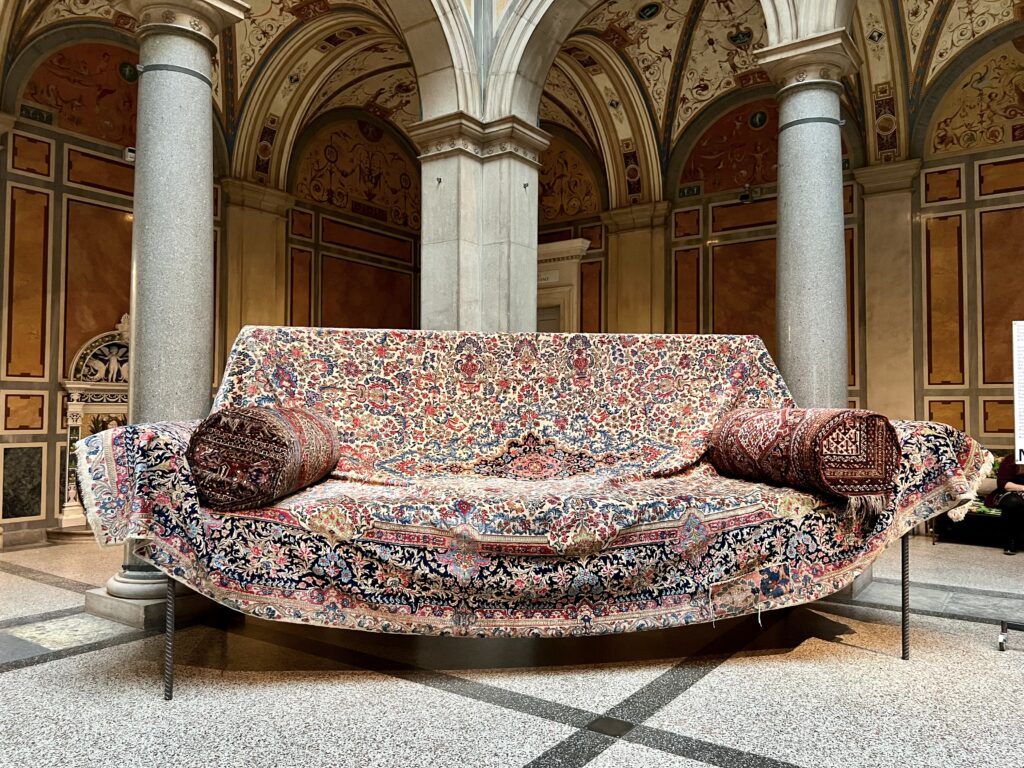
Sofa
In the museum’s courtyard atrium, you’ll discover a colossal sofa that doubles as a “sculpture.” It’s a creation by a group of Austrian artists known as “Gelatin.”
The immense iron sofa is adorned with a massive Persian rug and comfy bolster pillows. It’s an unmistakable homage to Sigmund Freud’s iconic consulting couch, which may be the world’s most famous piece of domestic furniture.
Much like Freud’s patients, visitors are encouraged to climb on the sofa and recline. This interactive feature was quite popular, making it a bit tricky to get a photo without other people enjoying the experience.
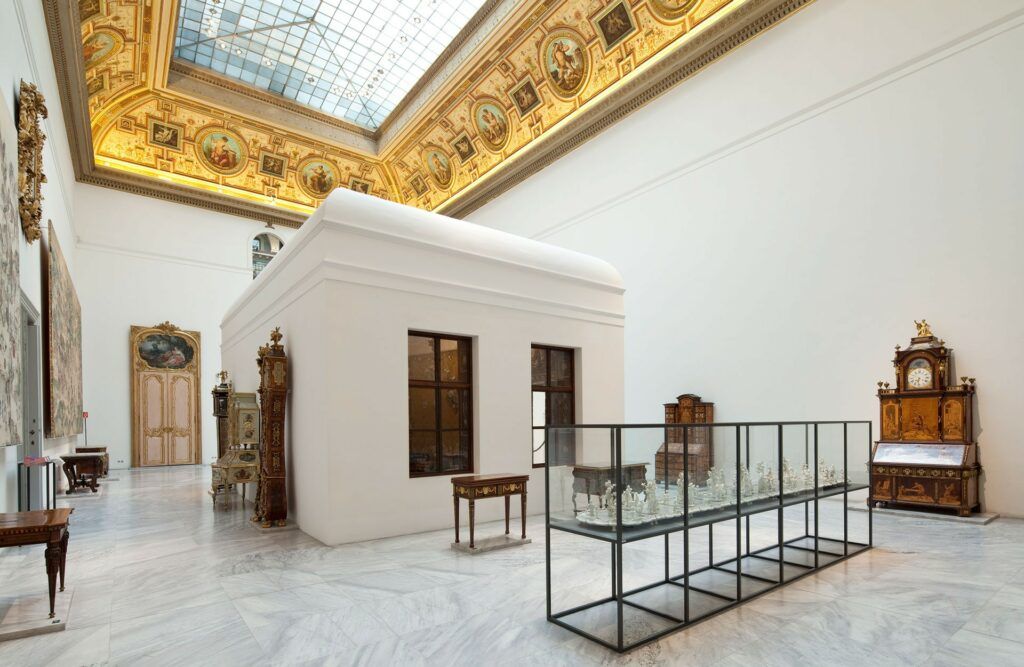
Renaissance Baroque Rococo Exhibit
In a rather unique setting, this exhibition hall features a spacious layout with a skylight and an intricately frescoed frieze. It was all meticulously arranged by Donald Judd, a renowned artist celebrated for his minimalist installations.
Within this hall, you’ll encounter a stunning array of 16th to 18th century furniture, including cabinets, clocks, tables, and an exquisite collection of Venetian glassware.
At the heart of this exhibition lies the Dubsky Room, concealed within a pristine white enclosure. You can only peak at it through the windows.
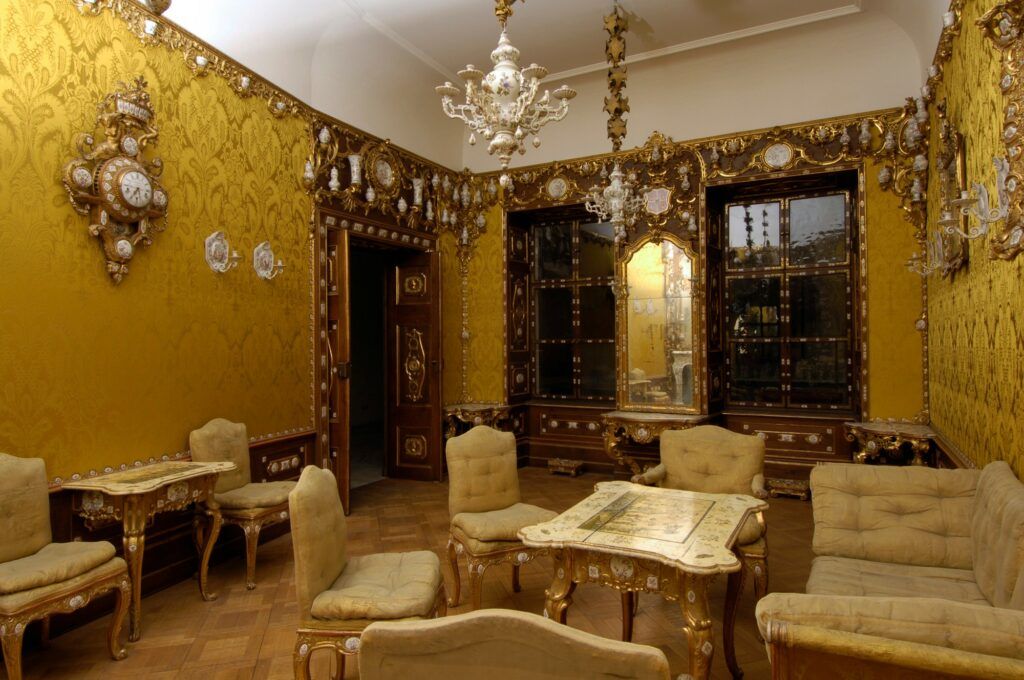
This extravagant Baroque-Rococo chamber is known as a “Porcelain Cabinet.” They were a fashionable European trend around 1800.
The room originated from the Palais Dubsky in Brno.
It boasts silk damask-covered walls, an opulent gilded cornice, resplendent Murano glass chandeliers, a marble fireplace, and intricately paneled doors. The accompanying furniture dates back to approximately 1850.
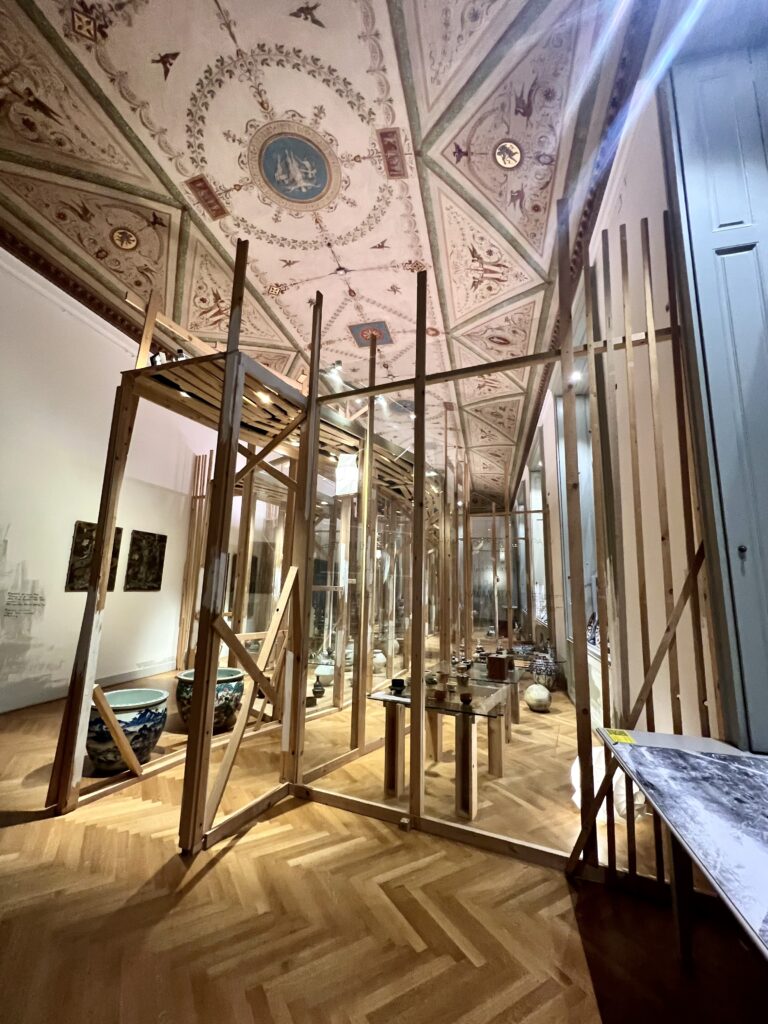
Asian Exhibit
The Asian exhibit is set in a modular room crafted from unpolished wood and glass. It’s a creation by Japanese artist Tadashi Kawabata.
Originally intended as a temporary installation in 2014, the museum has opted to adapt it by periodically changing the objects on display.
Strolling along the parquet floors, you’ll have the opportunity to admire various objects showcased behind glass. While you’re exploring, remember to cast your gaze upward and take in the captivating ceiling frescoes.
Within this exhibit, you’ll encounter an array of gorgeous gems, including exquisite vases, delicate porcelain pieces, serene Buddhas.
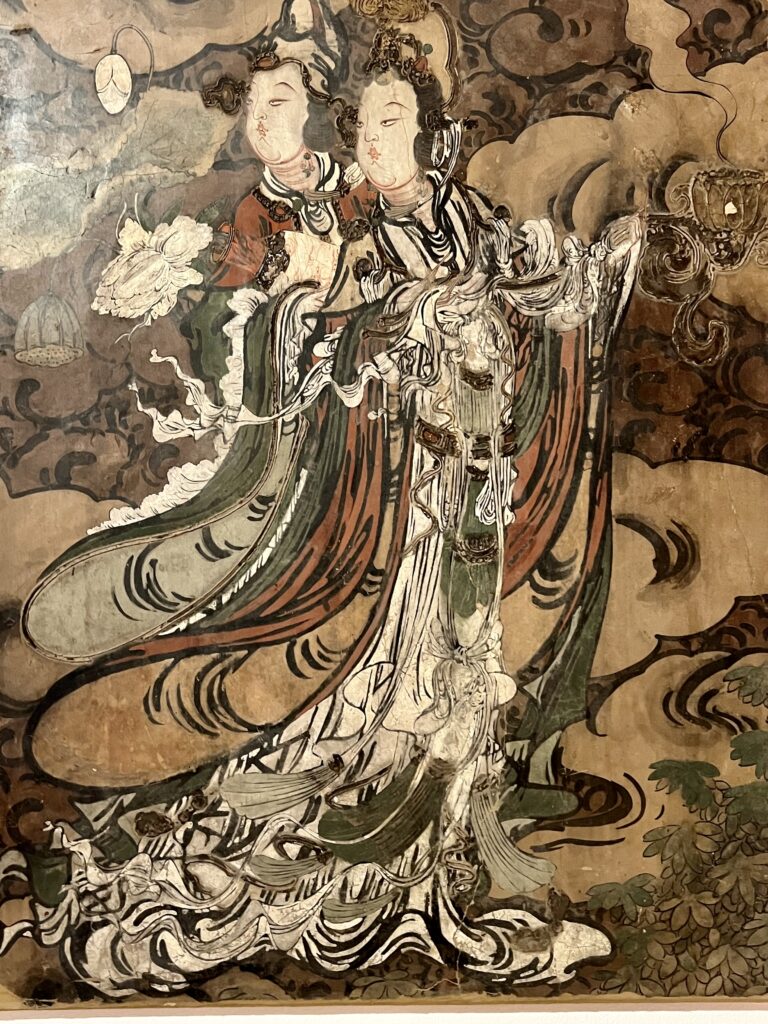
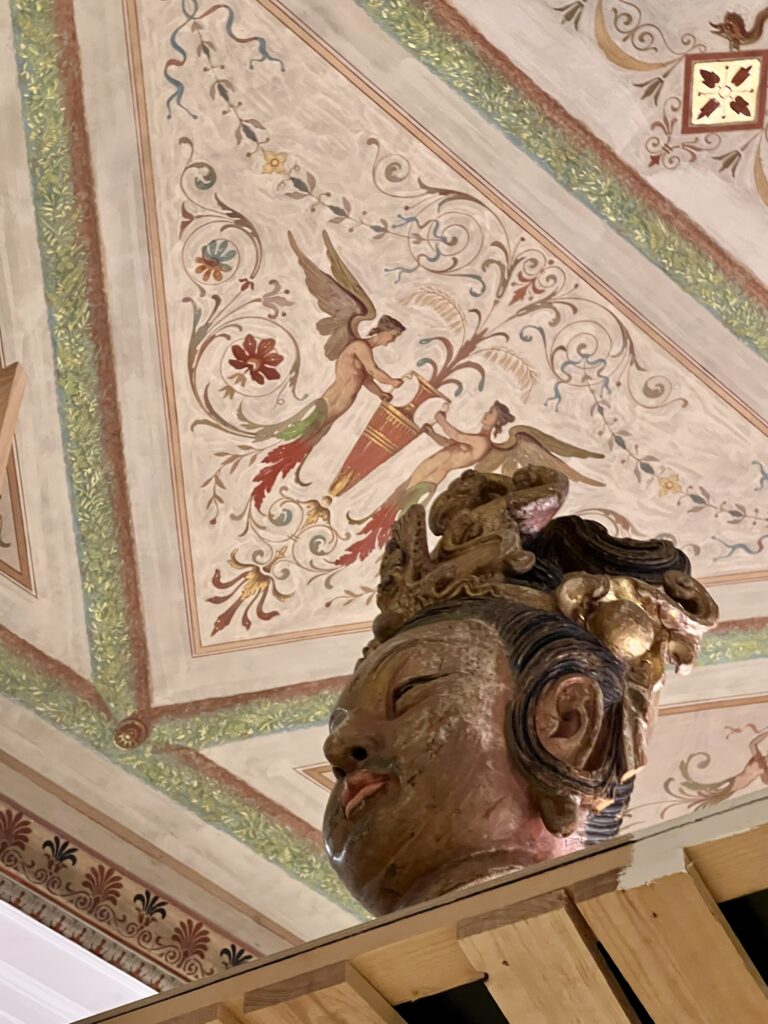
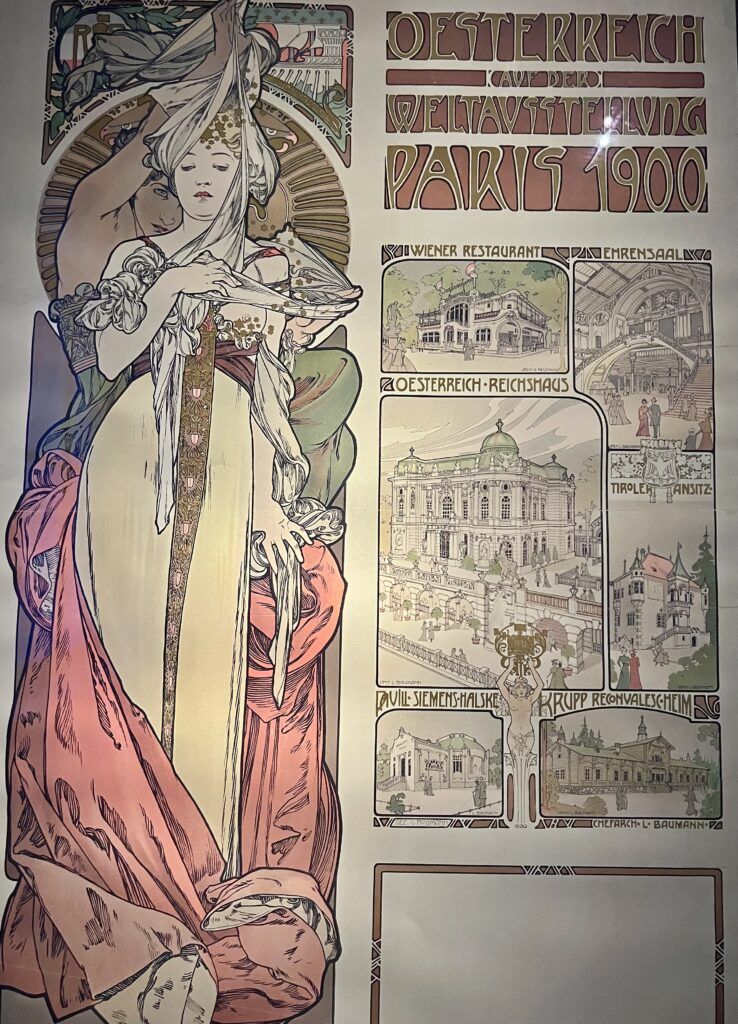
Vienna 1900 Exhibit
This exhibit truly shines at the MAK, and it’s divided into three fascinating themes:
- The rejection of Historicism from 1890-1900
- The development of Vienna’s unique Art Nouveau style
- The evolution of a more diverse and international style
During the heyday of Art Nouveau and Secessionist movements, artists produced some of the world’s most remarkable arts and crafts. They believed that art extended beyond painting, even encompassing utilitarian items as fine art.
In Vienna 1900, you’ll encounter a diverse array of creations, including posters, glassware, jewelry, graphic arts, and furniture.
Among the featured artists are renowned names like Gustav Klimt, Charles Rennie Mackintosh, Margaret Macdonald Mackintosh, René Lalique, Louis Comfort Tiffany, Koloman Moser, Otto Wagner, Josef Hoffmann, and Adolf Loos.
While there are countless captivating items to explore, I’ll highlight a few standout pieces for you.
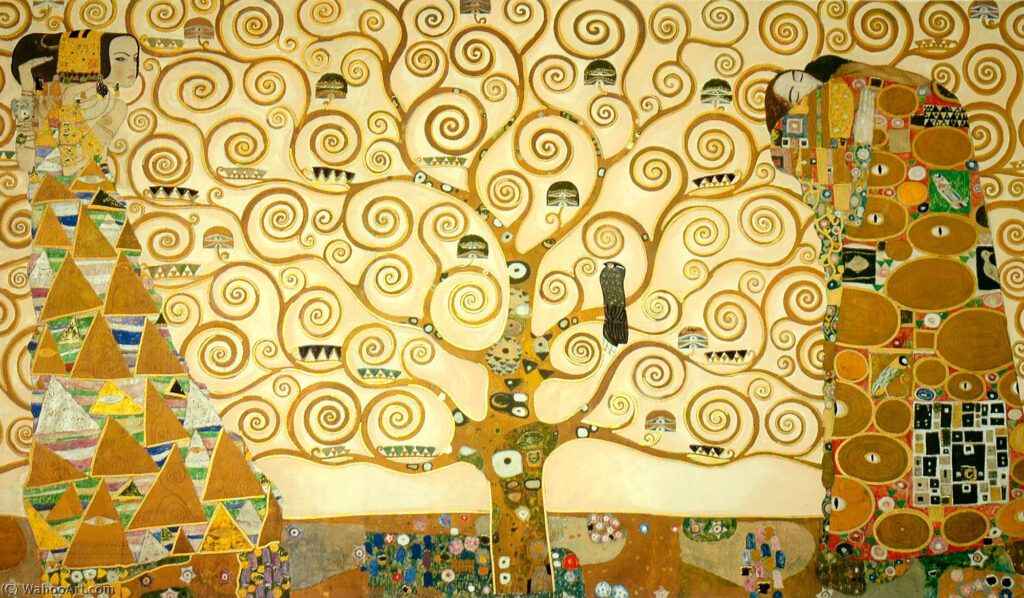
Klimt’s Stocklet Cartoons
Gustav Klimt created the Stoclet Frieze between 1905 and 1911 during his “gold period.” It was commissioned by a wealthy Belgian named Adolphe Stoclet for his dining room in his mansion in Brussels, the Stoclet Palace.
The frieze consists of three panels: Expectation (on the left), The Tree of Life (in the center), and Fulfillment (on the right). Klimt used oil paint, gold leaf, marble, pearl, platinum leaf, and other materials for this work.
The fully restored panels are behind glass. You’ll find spiraling decorative patterns, a tree of life, a young girl in a meadow, and a couple embracing. The overall look is luxurious and sensual, which was typical of Klimt’s golden style.
Klimt specified that, in re-creating his cartoon, only the finest materials could be used — enamel, mother of pearl, and gold leaf. The artist claimed the work was his “ultimate stage in the development of ornament.”
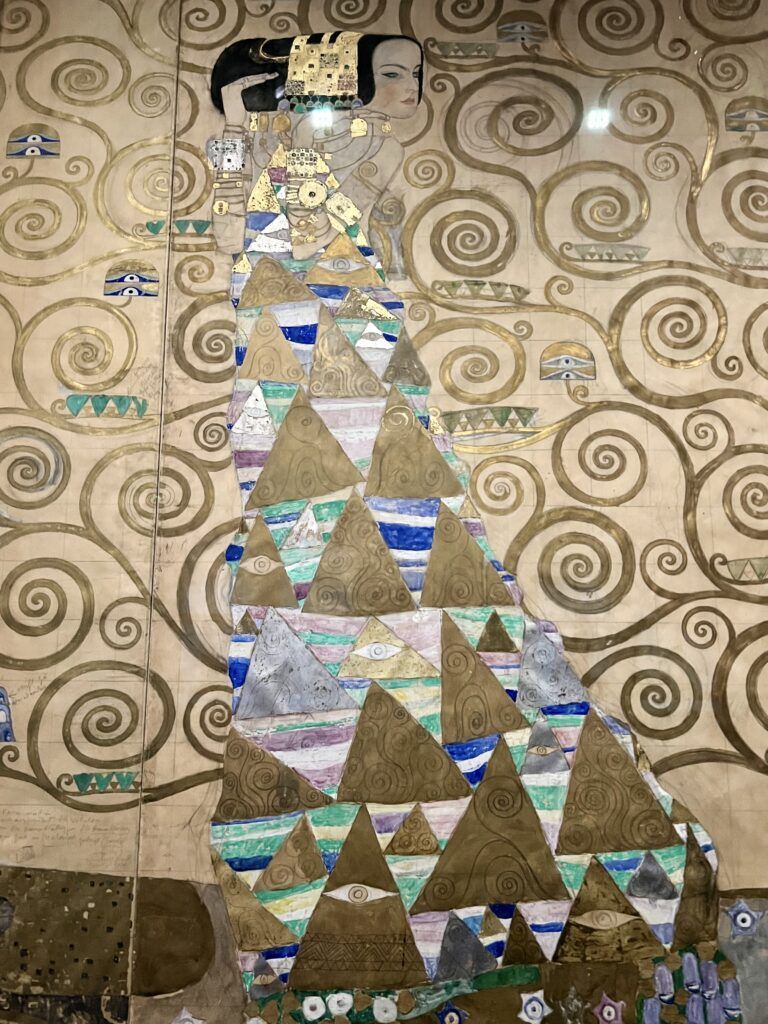
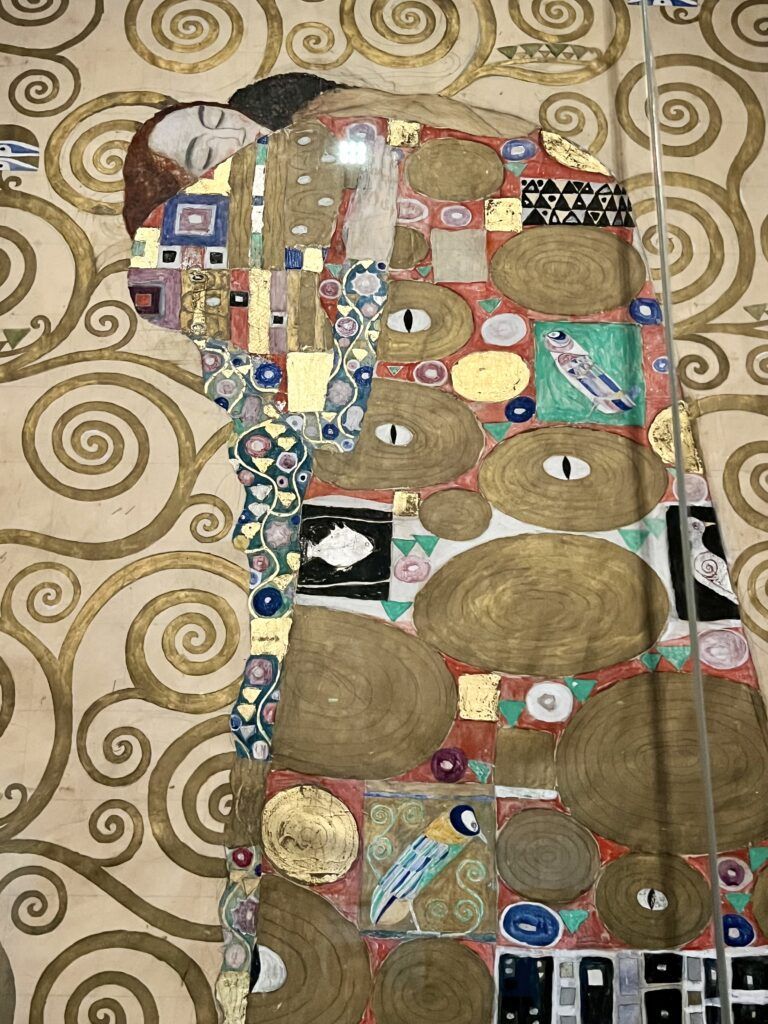
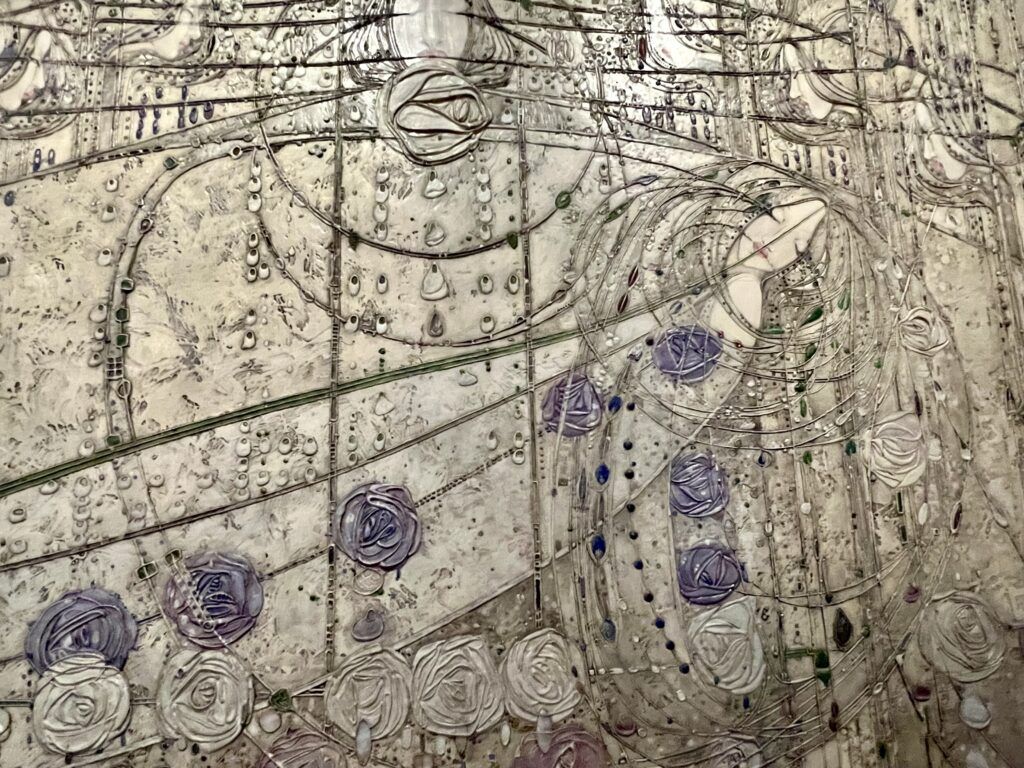
Macintosh, Seven Princesses
Margaret Macdonald Mackintosh was one of the most gifted and original Art Nouveau artists, hailing from Scotland. Unfortunately, she was overshadowed by her more famous husband Charles Mackintosh.
Mackintosh exhibited at the Vienna Secession Exhibit of 1900. Her beautiful gesso panel from 1902, The Seven Princesses, was designed for the music room of a villa.
The work is based on a literary reference. The princesses await the prince, who finds them all dead upon arriving. The main motif in the image is that of eyes, from which stylized tears flow. Inset precious stones and shells give it a relief-like effect.
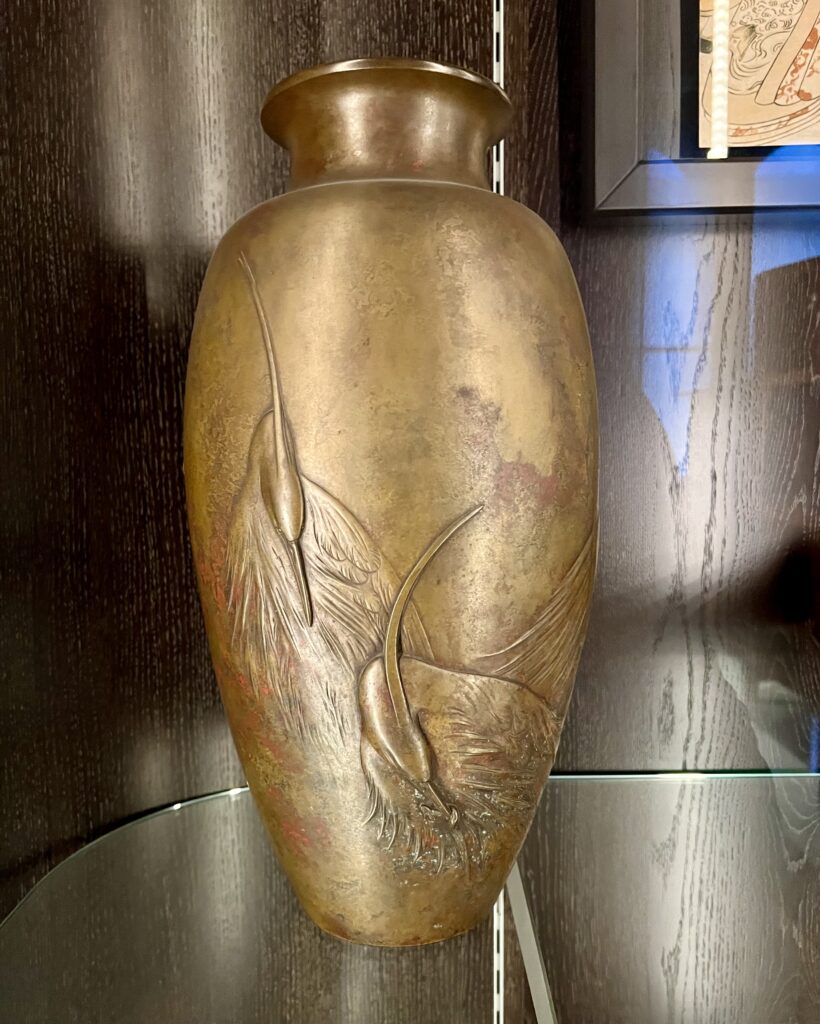
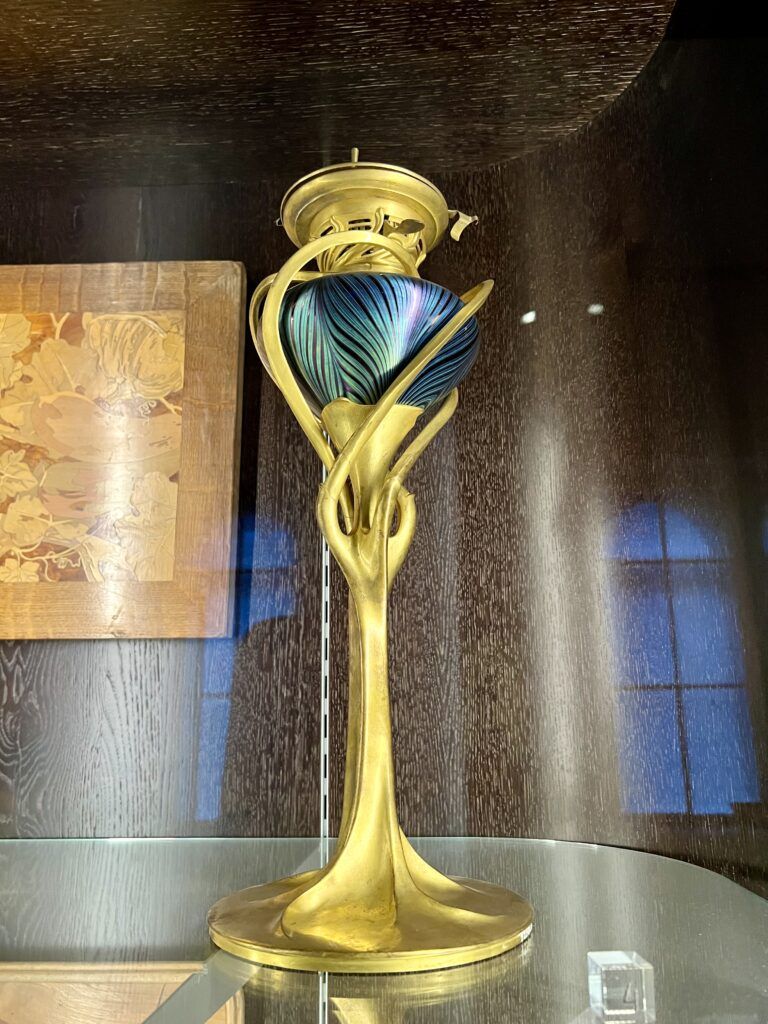
Vases
The MAK’s collection of vases is from the late 19th and early 20th centuries. These gorgeous objects emerged in response to the industrialization and mass production of goods during the period.
The vases are made from different materials — ceramics, glass, metal, and copper. Many have intricate designs, unique forms, and exquisite craftsmanship.
All I can say is that I wanted to take them all home!
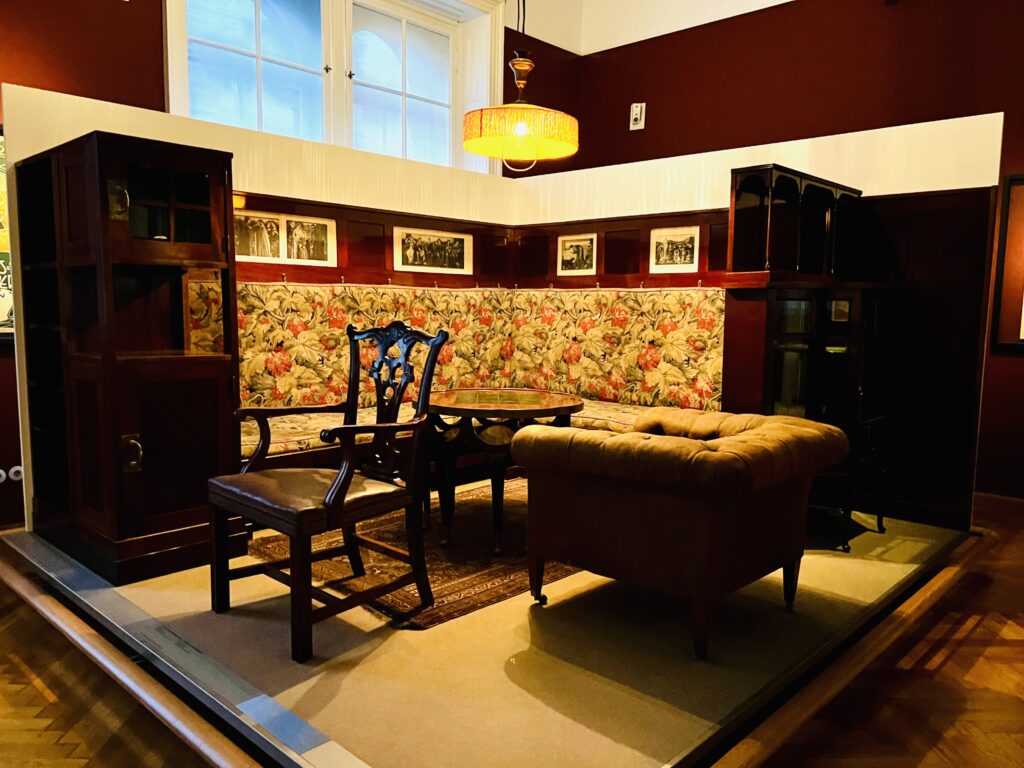
Furniture
The Vienna Secession artists emphasized clean lines, simplicity, and geometric shapes in their furniture. There are many examples by Koloman Moser, Adolf Loos, and others, including entire rooms on display.
Loos was considered Vienna Modernism’s lone warrior. He rejected the Secessionists focus on a “total work of art.”
He advocated for the works that were both functional and aesthetic. He designed the seating ensemble (in my photo above) for the study of Gustav and Marie Turnowsky in 1902.
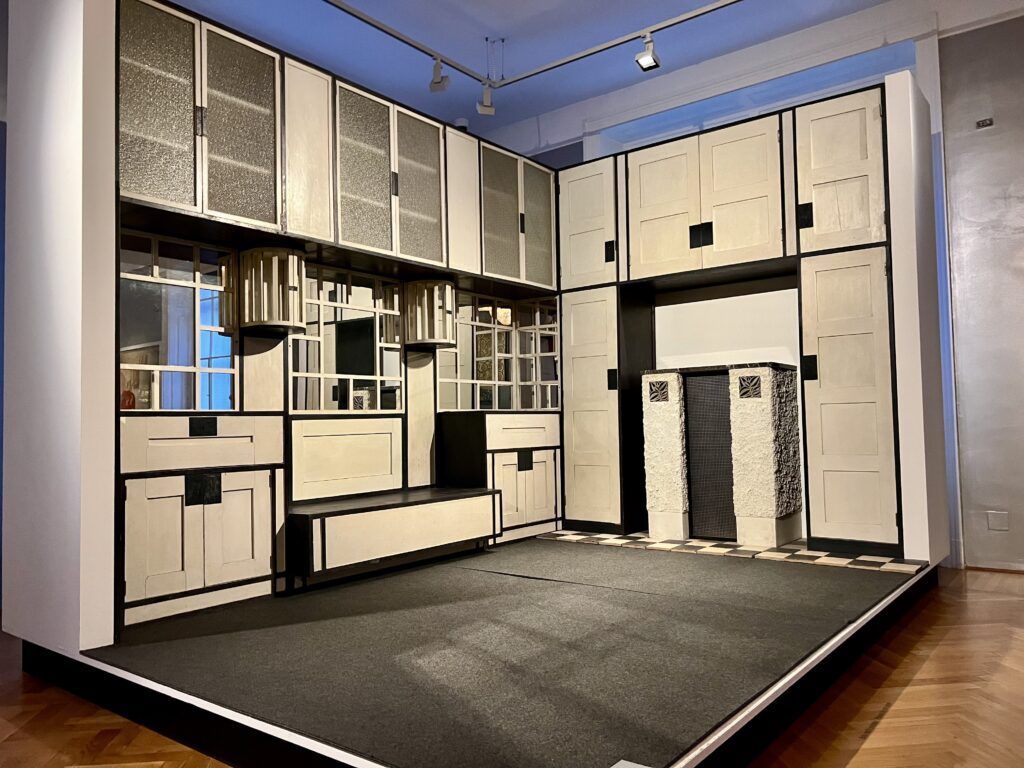
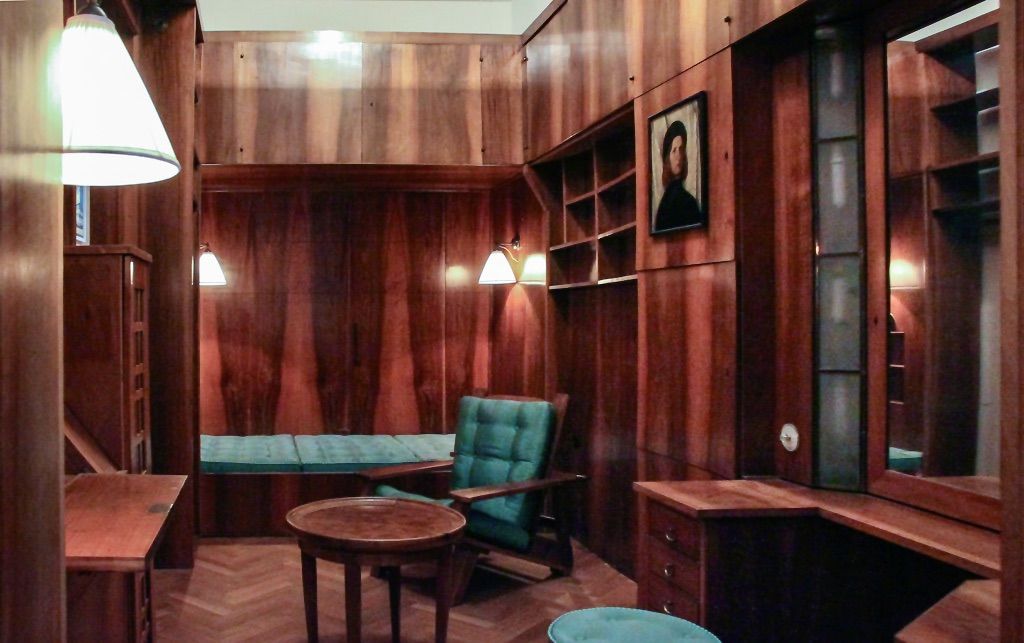
Koloman Moser, a prominent Austrian artist and designer, focused on creating functional and visually pleasing furniture. His approach was characterized by simplicity, geometric forms, and an integration of art and craftsmanship.
The guest room for his house on display at the MAK features a monochromatic color scheme with bold geometric patterns.
There’s a stark contrast between light and dark, achieved through the use of white-painted furniture against a black and white checkered floor and cabinet trim.
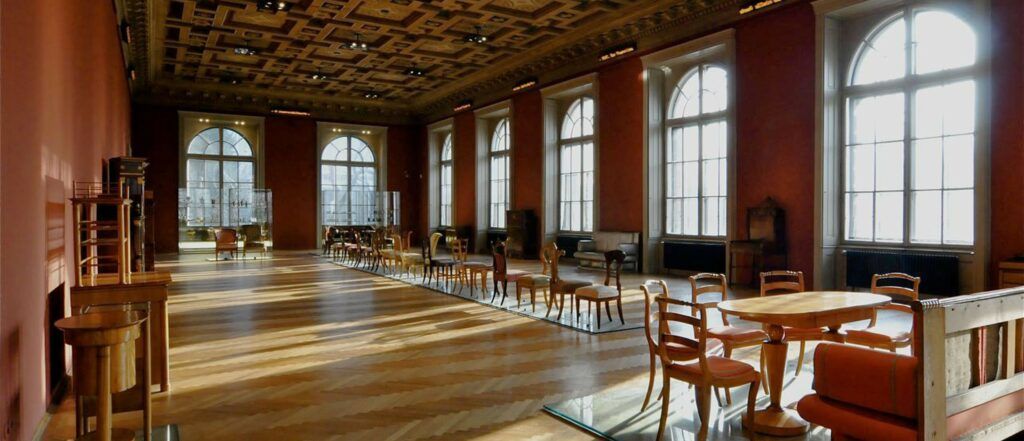
Empire Style Beidermeier
The MAK’s collection of Biedermeier includes chairs, cabinets, and decorative objects.
Biedermeier furniture and design is known for its simplicity and practicality. Crafted from various woods like cherry and walnut, the style favors clean lines and minimal ornamentation.
Biedermeier theory prioritizes functionality and comfort, which was appealing to the emerging middle class.
Despite its simplicity, Biedermeier design exudes elegance and sophistication through quality craftsmanship. Its geometric shapes and understated elegance continue to influence modern interior design.
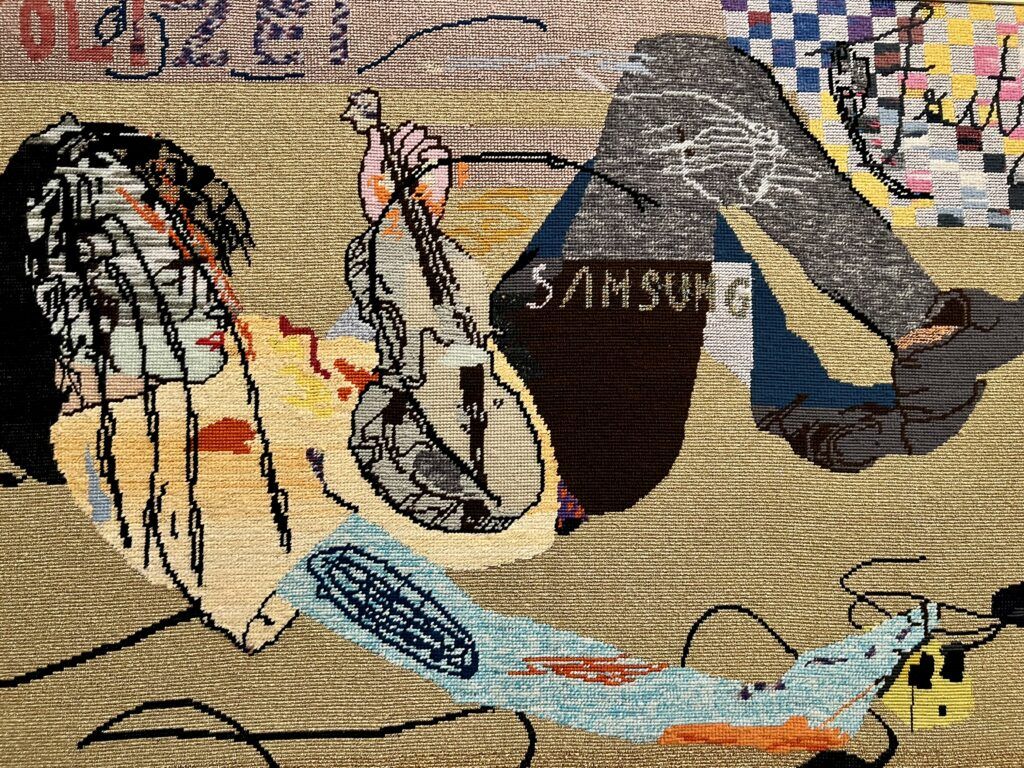
MAK Design Lab
The MAK Design Lab is an innovative and interactive space. It’s a platform for exploring contemporary design concepts, experimentation, and hands-on experiences related to design, technology, and industry.
Visitors can engage with various design projects, installations, and exhibitions that showcase cutting-edge ideas and design processes.
The lab often features works by contemporary designers, artists, and makers who push the boundaries of traditional design disciplines.
It directs your attention to the consequences of the current lifestyle, but also provides innovative solutions to problems.
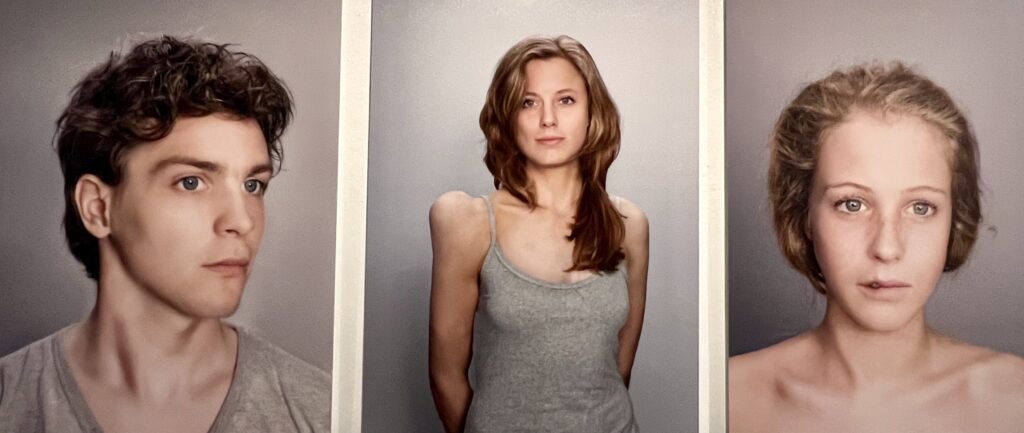
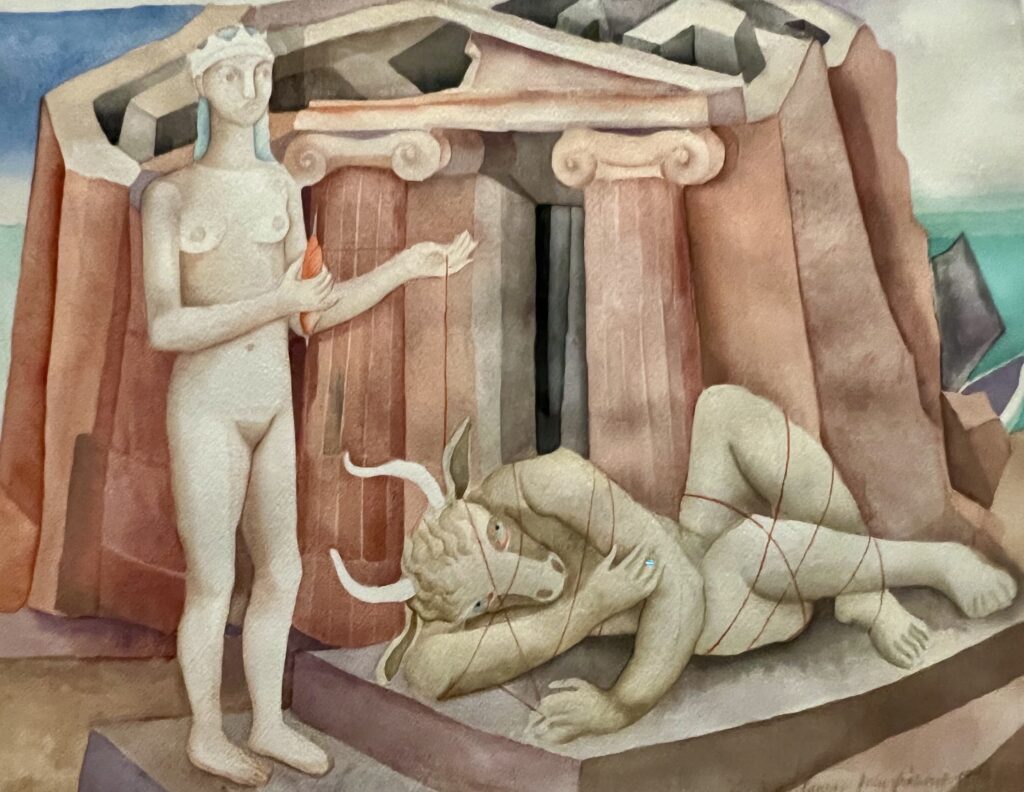
Gertie Frohlich Exhibit
I wanted to share my thoughts on one of the temporary exhibitions at the MAK.
My personal favorite was the collection of paintings by Gertie Frohlich, a prominent avant-garde artist from the post-war era. The exhibition showcases her diverse body of work, including pieces on paper, canvas, and grand tapestries.
Frohlich had a unique focus on reimagining mythological tales from a female perspective. Her inspiration came from allegory, poetry, and even contemporary fairytales.
One notable example is her reinterpretation of the Greek myth of Ariadne. Instead of helping Theseus escape from the labyrinth, Frohlich’s Ariadne uses the ball to subdue the Minotaur herself, turning the traditional narrative on its head.
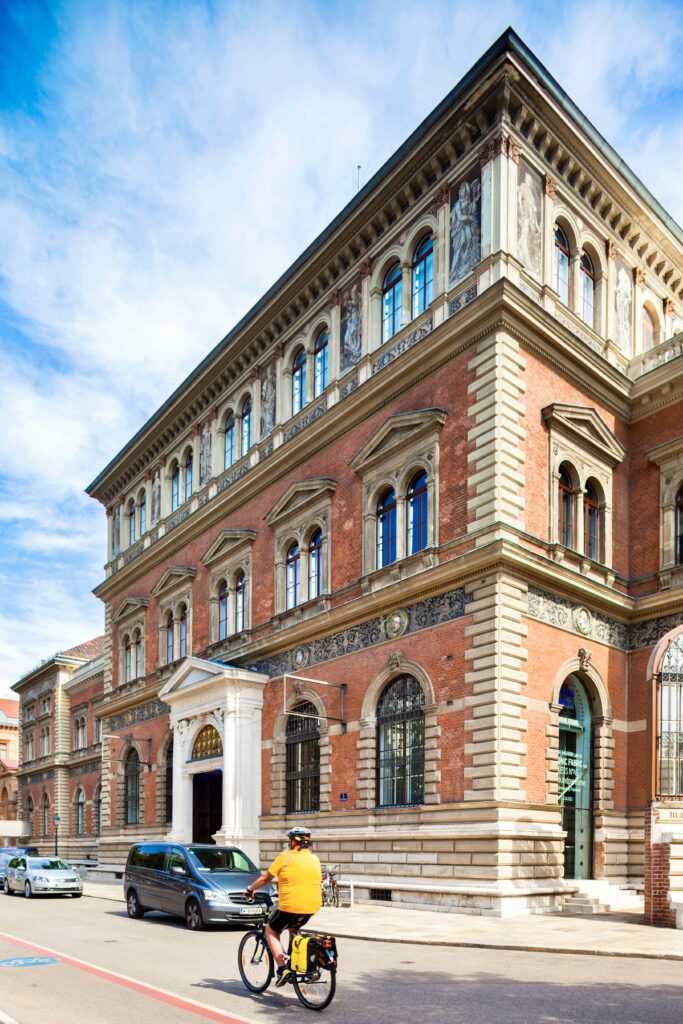
Practical Guide & Tips For The MAK
Here are some must know tips for visiting MAK.
Address: Stubenring 5, 1010 Wien, Austria. If you’re coming by metro, take the U3 line to Stubentor.
Hours: Open Tuesday through Sunday 10:00 am to 6:00 pm, closed Monday. On Tuesday, the museum is open until 9:00 pm.
Tickets:
The ticket price is 15 euros and includes all temporary exhibitions. You can purchase tickets online, at the ticket counter, or from Get Your Guide. Check the website for periodic guided tours in English.
Shop: The MAK has perhaps the most interesting museum shop I’ve seenin Vienna. There are books, decorative objects, ceramics, and even clothing and handbags.
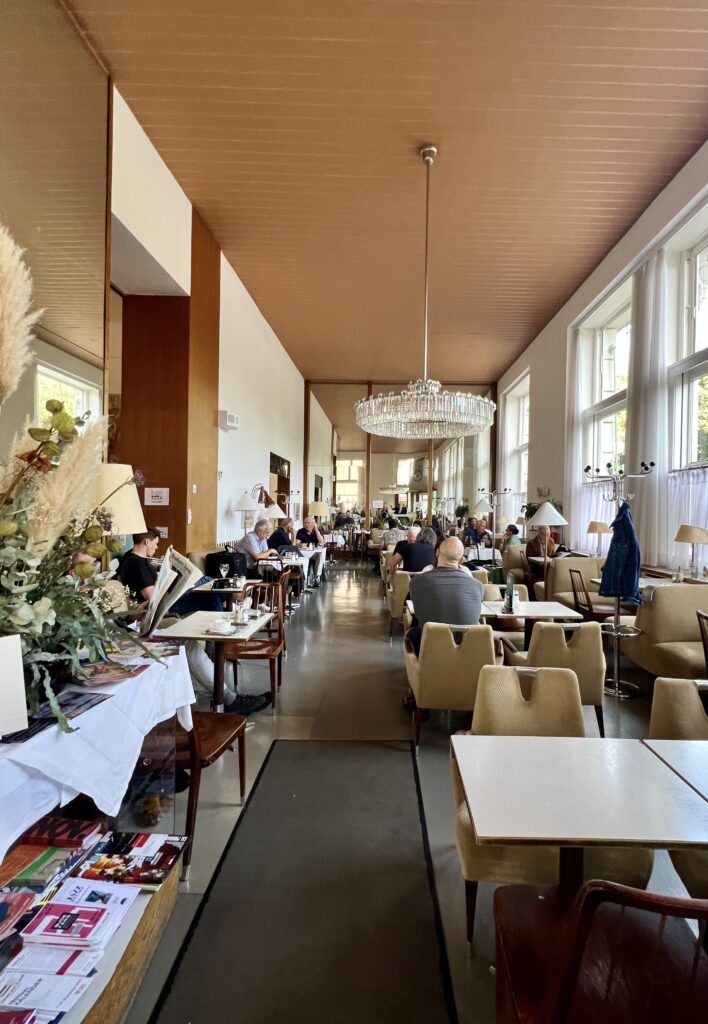
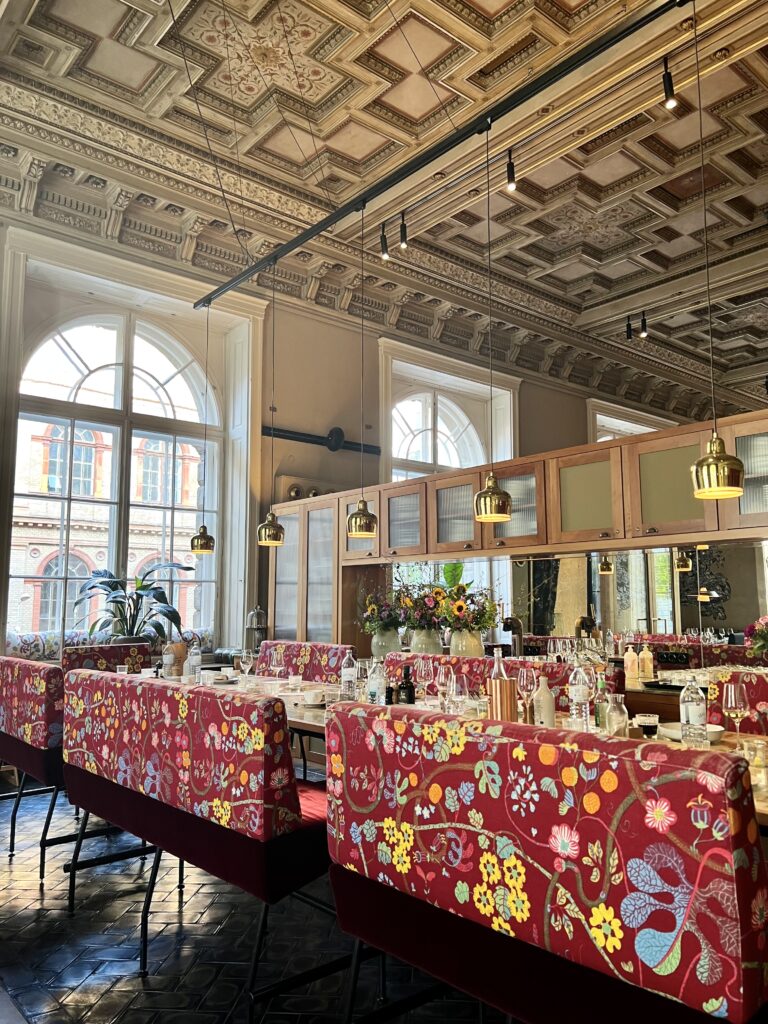
Restaurant and Cafes:
The museum has a spectacular cafe/restaurant, Salonplafond. I’ve eaten there twice now.
The decor is fabulous. And you don’t have to purchase a museum ticket to eat there. But do make a reservation.
Just across the street in the famous Cafe Prückel, a famous Viennese coffee house. It was designed in the Modernist style by Adolf Loos, so fits in with the MAK’s focus.
Pro Tips: You’ll have to put all handbags and backpacks in a locker for one euro.
Is MAK worth visiting?
100% yes from my point of view. There’s a gorgeous collection of decorative art in one of Vienna’s grandest buildings. It’s a must visit for Art Nouveau aficionados. Perhaps not as much of a priority if you are not.
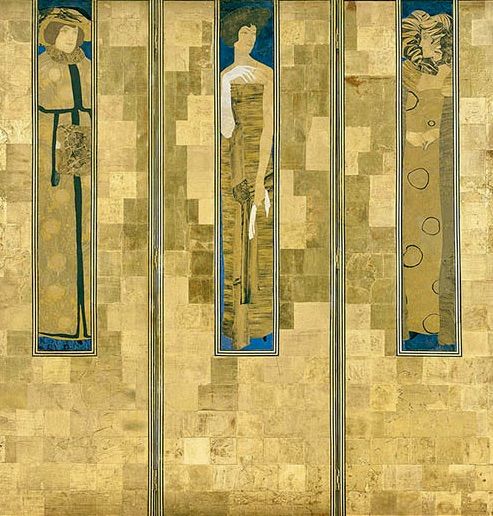
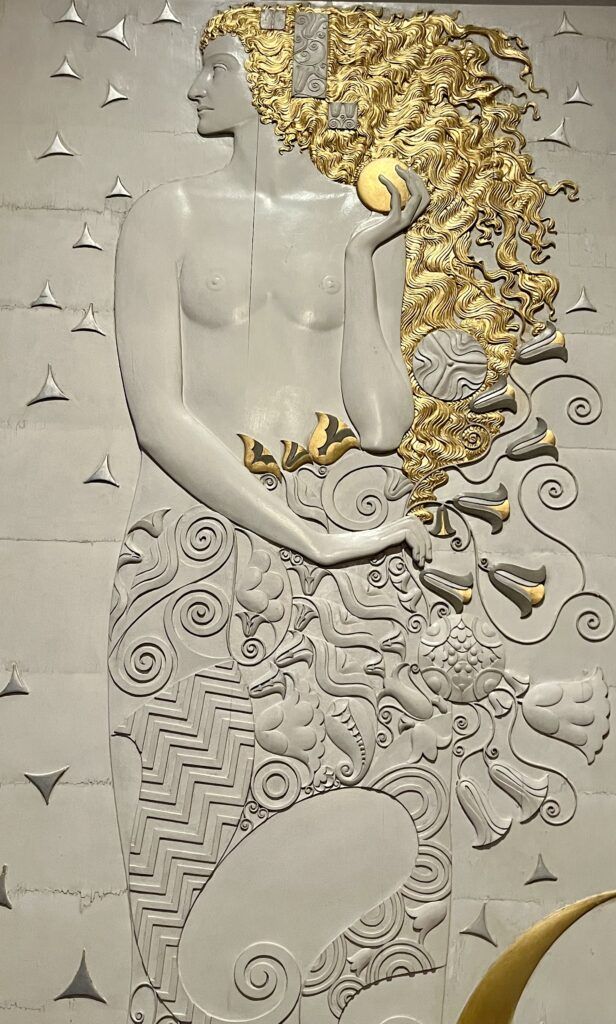
I hope you’ve enjoyed my guide to the MAK Museum. You may find these other Vienna travel guides and resources useful:
- 3 days in Vienna itinerary
- guide to the Belvedere Palace
- guide to Klimt paintings in Vienna
- guide to the Beethoven trail in Vienna
- what to do in Vienna in winter
- best museums in Vienna
- guide to the Sisi Museum
- guide to the Kunsthistoriches
- guide to the Vienna Secession
- guide to the Albertina Museum
- guide to the Freud Museum
- guide to the Secession Museum
If you need a guide to the MAK, pin it for later.

